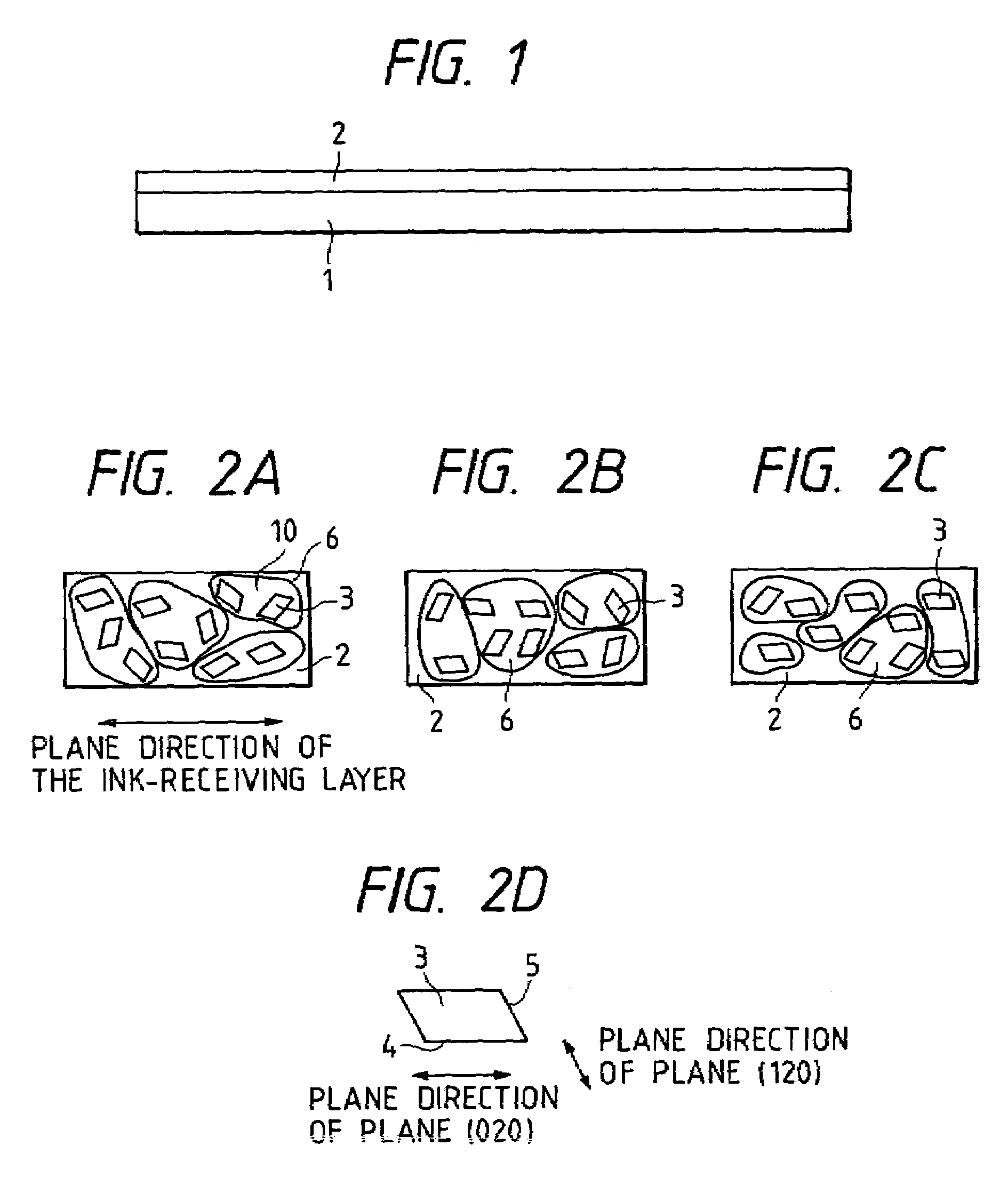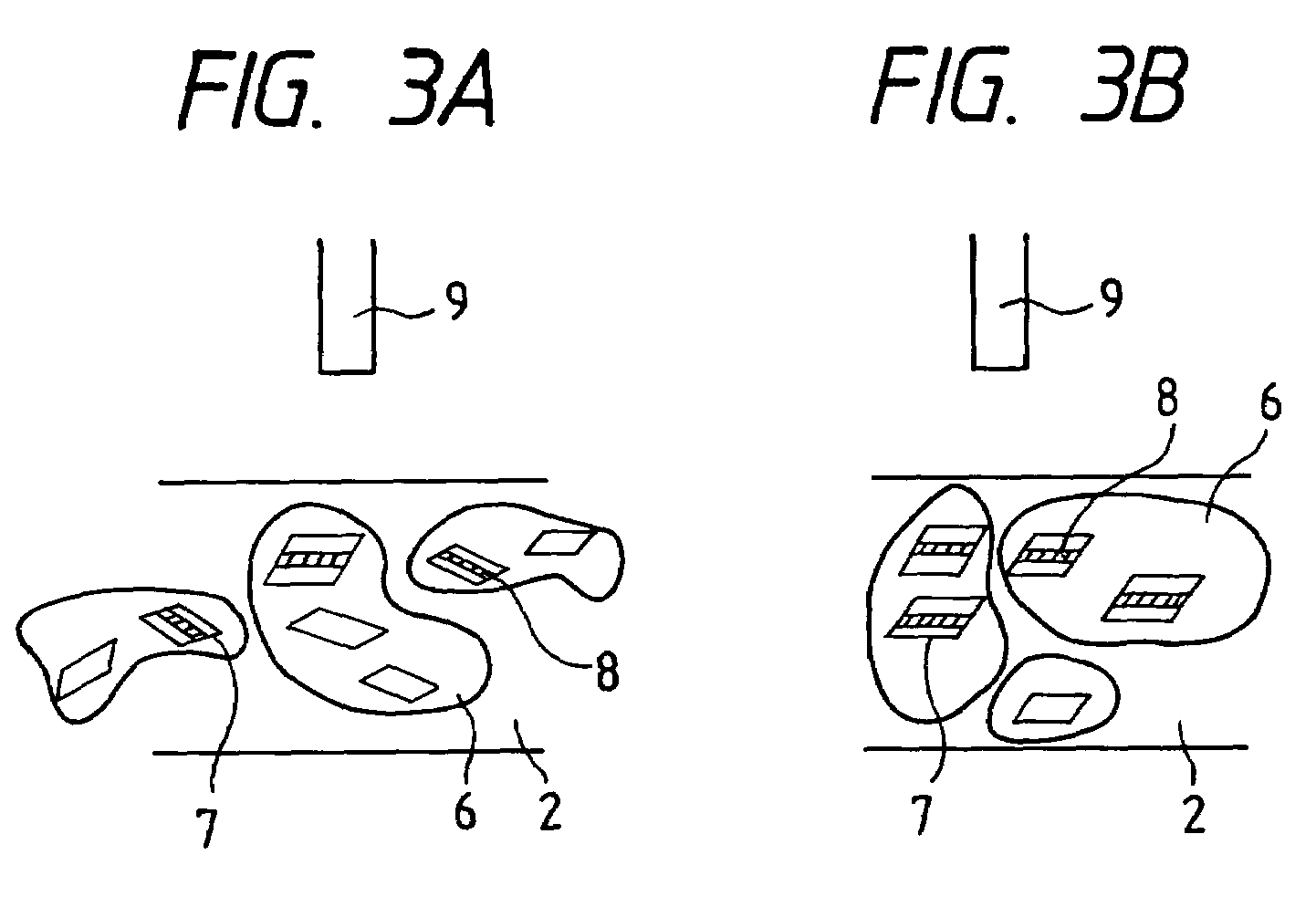Recording medium, process for production thereof, and ink-jet recording method employing the medium
- Summary
- Abstract
- Description
- Claims
- Application Information
AI Technical Summary
Benefits of technology
Problems solved by technology
Method used
Image
Examples
examples 1 to 4
[0087]Aluminum dodecyloxide was prepared according to by weight to obtain an alumina liquid dispersion. Separately, polyvinyl alcohol (trade name: Gosenol NH18 (hereinafter referred to as “PVA”), Nippon Gosei Kagaku K.K.) was mixed with deionized water at a concentration of 17% by weight to obtain a PVA solution. The alumina liquid dispersion and the PVA solution were mixed at a mixing ratio of 18:1 to obtain a coating liquid. This coating liquid was applied onto a resin-coated paper sheet by means of an extrusion coater at a coating temperature of 100° C. under shearing stress of 7.5 N / m2 (75 dyn / cm2), and was delivered without blowing of drying air for one second to thicken and set the coating layer by utilizing thixotropy. Then the coating layer was dried for 30 seconds in an environment of relative humidity of 40% at a temperature shown in Table 2. The resulting recording medium was evaluated for the printing properties, etc. The evaluation results are shown in Table 2. the meth...
example 5
[0091]A recording medium (before heating) was prepared in the same manner as in Examples 1 to 4 except that the aging conditions and drying conditions of the alumina hydrate were changed as shown in Table 3, the drying temperature was 68° C., the drying time was 30 seconds and the relative humidity was 50%. The resulting recording medium was further heated for 30 minutes in an oven kept at a temperature of 80° C. and a relative humidity of 12% (recording medium after heating). The properties of the recording medium before and after heating are shown in Table 4. The heating treatment of the recording medium in this Example increases the crystallinity thereof, and thereby improving the ink absorbency, as shown in Table 4.
[0092]
TABLE 3Aging conditions of Alumina hydrate inExamples 5, and 6–11Example No.56–1011pH before aging6.46.36.1Aging temperature (° C.)323433Aging period (days)151816Aging apparatusOvenOvenOvenCrystallinity10.047.212.0BET specific220235230surface area (m2 / g)Pore vol...
examples 6 to 10
[0094]Alumina hydrate liquid dispersions were prepared in the same manner as in Examples 1–4 except that the aging conditions and drying conditions were changed as shown in Table 3. The liquid dispersion was applied by means of an extrusion coater and dried. The shearing stress given to the coating liquid was adjusted to be 0.2 N / m2 (Example 6), 6.0 N / m2 (Example 7), 10.0 N / m2 (Example 8), 14.0 N / m2 (Example 9), and 18.0 N / m2 (Example 10) respectively by changing the slit width and the extrusion pressure. The amount of the coating was 6 g / m2 in each Example.
[0095]The coating was conducted at a rate of 1 m / s. The coated material was delivered without blowing of drying air for one second after the coating application to thicken and set the coating by utilizing thixotropy of the coating liquid, and then it was dried for 20 seconds at 90° C. at a relative humidity of 40%.
[0096]The resulting recording mediums were evaluated for printing properties. The results are shown in Table 5. The r...
PUM
| Property | Measurement | Unit |
|---|---|---|
| Fraction | aaaaa | aaaaa |
| Fraction | aaaaa | aaaaa |
| Radius | aaaaa | aaaaa |
Abstract
Description
Claims
Application Information
 Login to View More
Login to View More - R&D
- Intellectual Property
- Life Sciences
- Materials
- Tech Scout
- Unparalleled Data Quality
- Higher Quality Content
- 60% Fewer Hallucinations
Browse by: Latest US Patents, China's latest patents, Technical Efficacy Thesaurus, Application Domain, Technology Topic, Popular Technical Reports.
© 2025 PatSnap. All rights reserved.Legal|Privacy policy|Modern Slavery Act Transparency Statement|Sitemap|About US| Contact US: help@patsnap.com



